Key Points and Summary – China’s anti-ship “kill chain” couples DF-21D/DF-26B/DF-17 salvos with satellites, OTH radars and scouts to push carriers outside strike range.
-But finding, fixing and updating tracks on a maneuvering CSG is hard—and U.S. defenses are layered: Aegis air/ballistic defense, EA-18G jamming, Nulka decoys, fighters, CIWS, and longer-legged air wings via MQ-25.

(Feb. 15, 2023) U.S. Navy aircraft carrier USS Nimitz (CVN 68) flies the battle ensign during expeditionary strike force operations with the Nimitz Carrier Strike Group including the Arleigh Burke-class guided-missile destroyer USS Decatur (DDG 73). Nimitz Carrier Strike Group (NIMCSG) and Makin Island Amphibious Ready Group (MKI ARG) with embarked 13th Marine Expeditionary Unit (MEU) are conducting combined ESF operations, demonstrating unique high-end war fighting capability, maritime superiority, power projection and readiness. Operations include integrated training designed to advance interoperability between the two groups while simultaneously demonstrating the U.S. commitment to our alliances and partnerships in the Indo-Pacific region. (U.S. Navy photo by Mass Communication Specialist 2nd Class David Negron)
-The Navy is dispersing forces, leaning on subs, LRASM/Tomahawk, and deception to complicate targeting.
-Risks remain—airbases are vulnerable, magazines can empty fast, and hypersonics compress reaction time—but carriers are mobile, repairable “floating airfields,” not doomed. The decisive questions: non-kinetic effects and rearm/refuel under fire.
How Can US Aircraft Carriers Survive The Deluge Of Chinese Missiles?
US War Secretary Pete Hegseth set tongues wagging earlier this year when he made the statement that Chinese hypersonic missiles could sink all US aircraft carriers within minutes of a potential conflict.
“So, if our whole power projection platform is aircraft carriers, and the ability to project power that way strategically around the globe. And, yeah, we have a nuclear triad and all that, but [carriers are] a big part of it. And if 15 hypersonic missiles can take out our 10 aircraft carriers in the first 20 minutes of a conflict, what does that look like?” he said in an earlier interview.
While that may have been hyperbole to gain more traction for a larger defense budget, he is correct in his assessment that China has upgraded its armed forces for one purpose: to take on and defeat the United States.
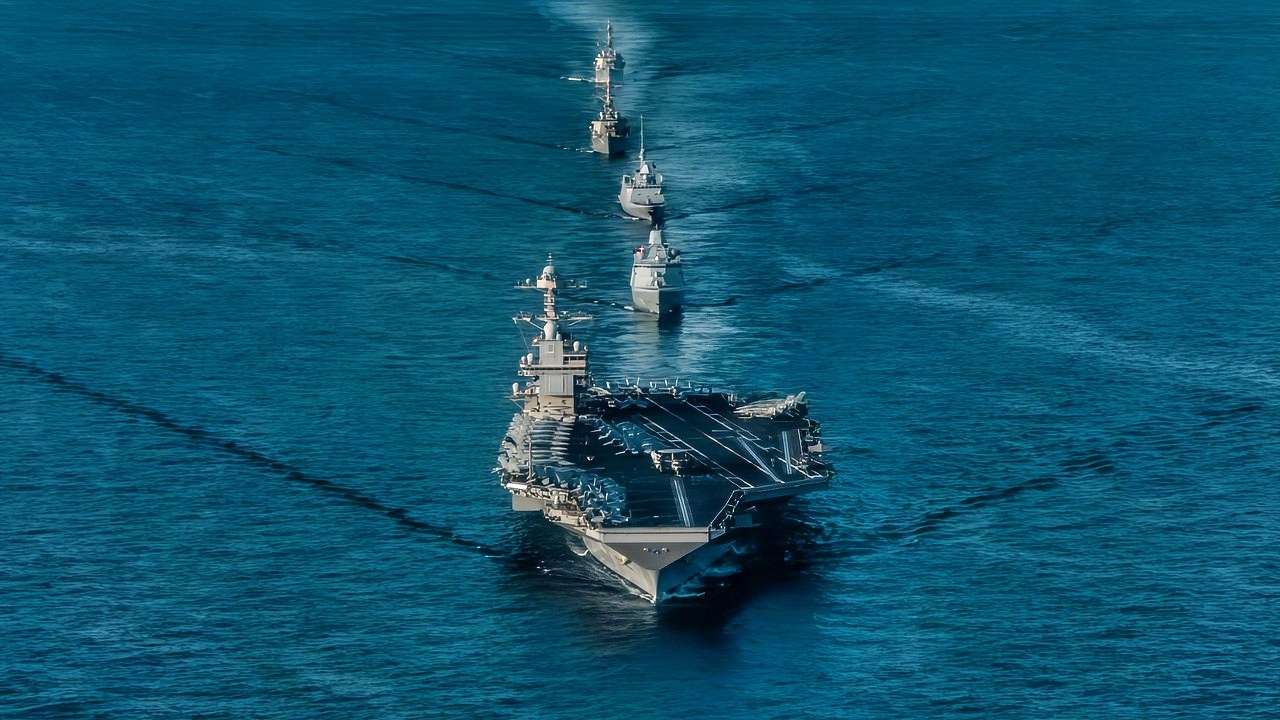
USS Gerald R. Ford Aircraft Carrier Training. Image Credit: U.S. Navy.
China’s Anti-Access/Area Denial Strategy:
China’s “carrier-killer” missiles are a core component of its broader A2/AD strategy, intended to push U.S. naval forces beyond an effective strike range.
The strategy was influenced by a 1996 incident during the Taiwan Strait Crisis, when China felt humiliated by its inability to counter the presence of U.S. carrier groups.
China has developed a “Kill Chain,” a sophisticated network of reconnaissance satellites, over-the-horizon radars, and drones to locate, track, and provide targeting data for its anti-ship missiles.
In a conflict, China would likely launch a coordinated, high-volume salvo of anti-ship missiles to overwhelm a carrier strike group’s defenses.
China’s Growing Hypersonic Missile Arsenal:
The Chinese military has built up its ballistic missile force and its arsenal of anti-ship missiles to deny the US Navy aircraft carrier strike groups access to the Western Pacific in a war sparked by an invasion of Taiwan.
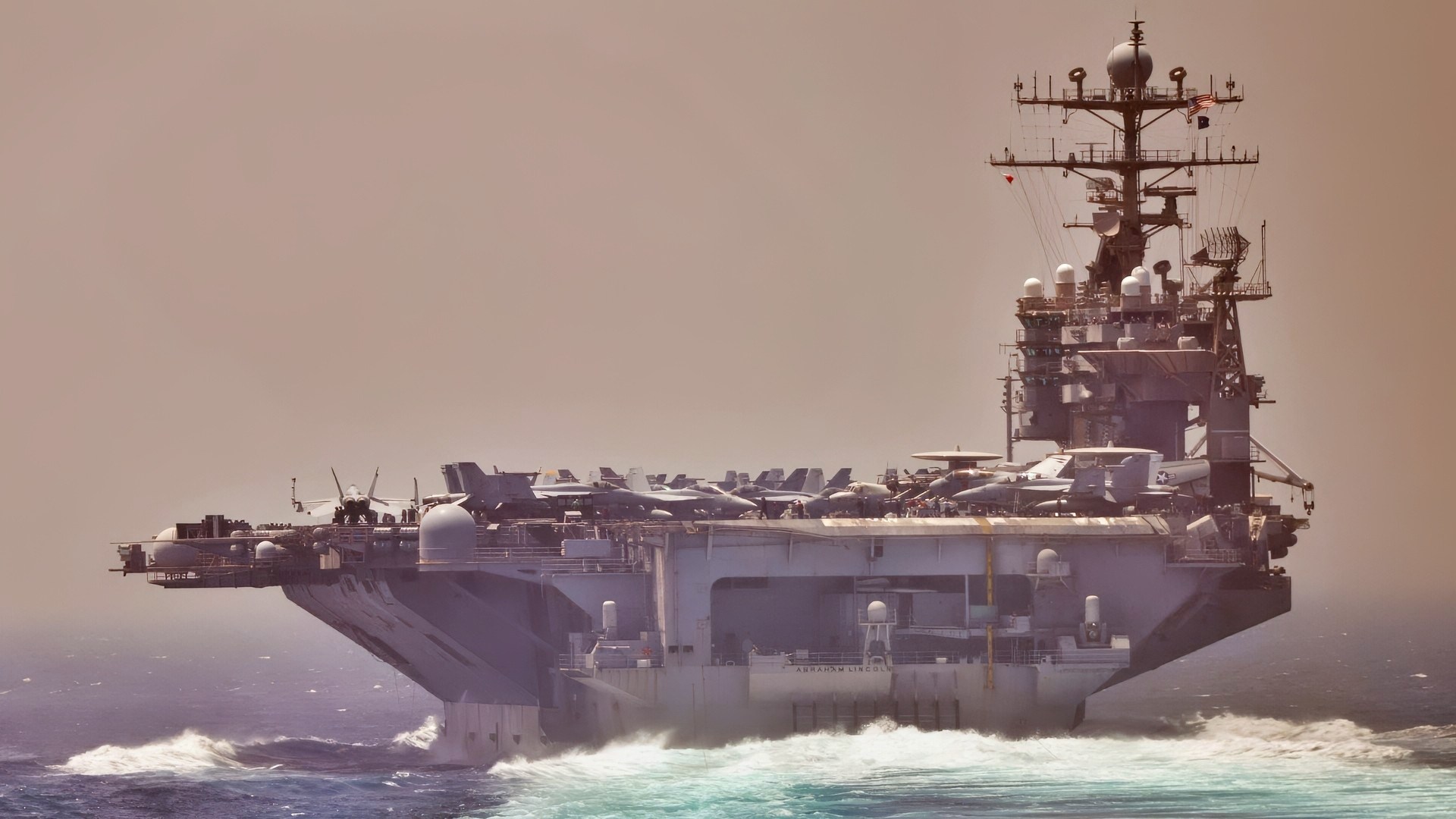
120501-N-WO496-013
STRAIT OF HORMUZ (May 1, 2012) The aircraft carrier USS Abraham Lincoln (CVN 72), left, and the guided-missile cruiser USS Cape St. George (CG 71) transit the Strait of Hormuz. Abraham Lincoln and Cape St. George are deployed to the U.S. 5th Fleet area of responsibility conducting maritime security operations, theater security cooperation efforts and support missions as part of Operation Enduring Freedom. (U.S. Navy photo by Mass Communication Specialist 3rd Class Alex R. Forster/Released)
China’s “carrier-killer” strategy is based on three land-based missile systems. The DF-21D is the original, a medium-range ballistic missile (MRBM) with a maneuverable warhead designed to strike U.S. carriers inside the First Island Chain.
The DF-21D is capable of rapid in-field reloading. This is a road-mobile, medium-range anti-ship ballistic missile (ASBM).
It is equipped with a maneuverable re-entry vehicle (MaRV) and flies at hypersonic speeds during its final phase, making it difficult for existing missile defense systems to intercept, and has a range of 1,500 to 2,000 km.
In 2013, the missile was tested against a ship target roughly the same size as contemporary U.S. aircraft carriers.
The DF-26B is a longer-range IRBM (4,000 km) that extends this threat to U.S. bases in the Second Island Chain.
Dubbed the “Guam Killer”, it is “enough to send all the American aircraft carriers within and beyond the Second Island Chain to the bottom of the sea”, said Yangtse Post military commenter Chen Gwangwen.
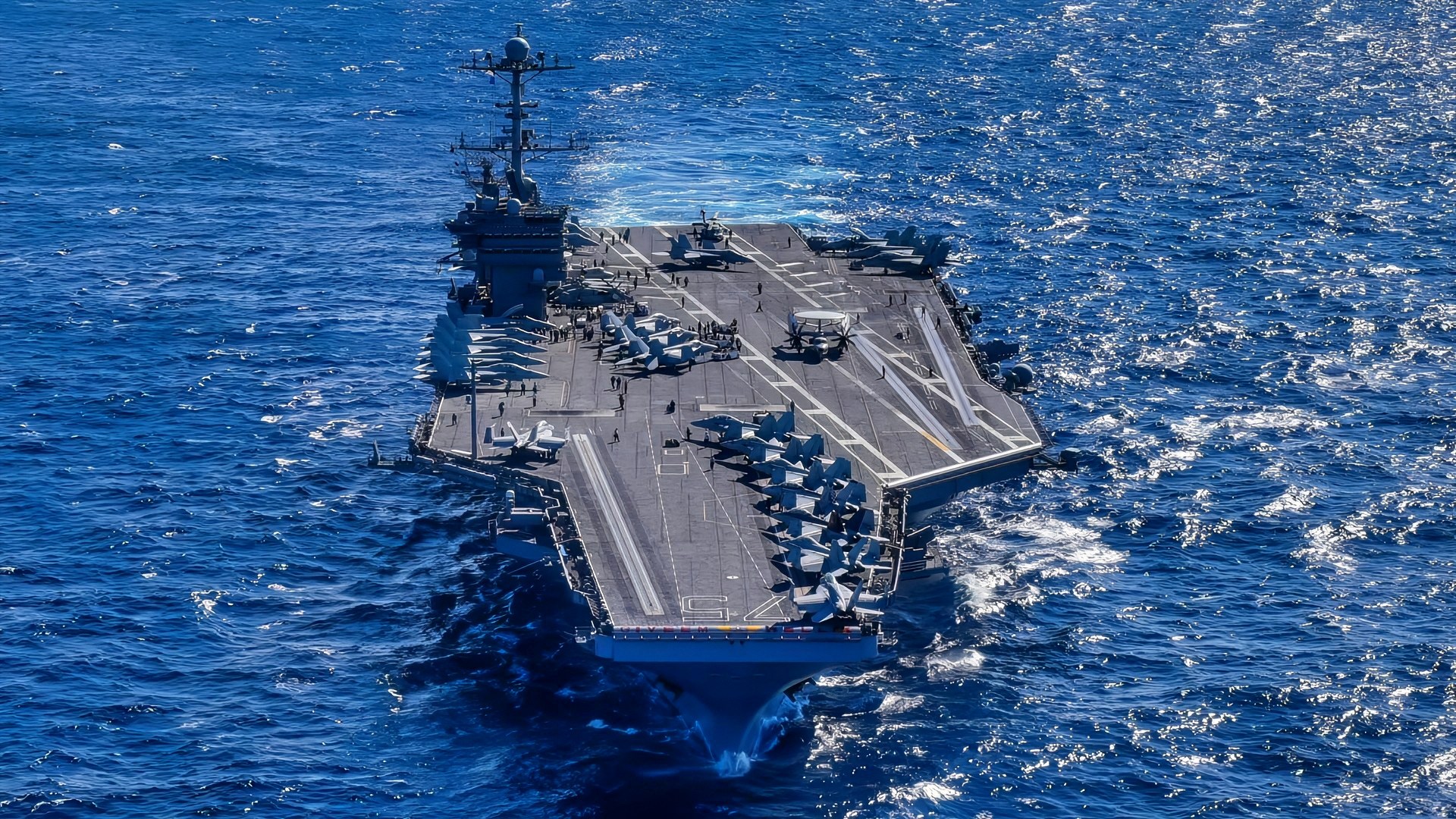
171030-N-EA818-367 ATLANTIC OCEAN (Oct. 30, 2017) The aircraft carrier USS Harry S. Truman (CVN 75) transits the Atlantic Ocean. Harry S. Truman has successfully completed tailored shipboard test availability and final evaluation problem and is underway preparing for future operations. (U.S. Navy photo by Mass Communication Specialist 3rd Class Tommy Gooley/Released)
The DF-26 anti-ship ballistic missile variant can rapidly be swapped with conventional and nuclear land-attack warheads. It is capable of nuclear precision strikes, potentially with low-yield optionality.
In addition to conventional anti-ship and conventional and nuclear land-attack payloads, it is mobile and can be moved rapidly after firing.
China has described the DF-21 and the DF-26B as “Carrier Killers.”
China’s numerous DF-17s have a hypersonic glide vehicle to evade U.S. and allied radar and ballistic missile defense. “The DF-17 has demonstrated a high degree of accuracy in testing, with one U.S. government official saying a test warhead “within meters” of its intended, stationary target.
U.S. defense officials have also said the DF-ZF HGV performed “extreme maneuvers” and “evasive actions” in previous test flights,” a CSIS Missile Threat essay says.
China successfully tested its DF-27 intermediate-range ballistic missile with a hypersonic glide vehicle in 2023.
China test-fired an intercontinental ballistic missile into the Pacific Ocean last September, adding to already heightened tensions in the region where multiple countries have overlapping territorial claims, and both Beijing and Washington seek to project their influence.
Drew Thompson, a former U.S. defense official, said the test launch, which coincides with the U.N. General Assembly meeting in New York, “is a pretty blunt signal” to the international order.
“China is signaling that its forbearance has limits, that it is prepared to use its most powerful weapons to deter adversaries or punish them if needed, if deterrence fails,” he said.
Accurate Targeting Is No Easy Feat
However, accurate targeting also depends on the Chinese systems’ ability to track a moving American vessel and penetrate newer, more advanced missile systems.
The Chinese will have to fuse efforts to use satellites, over-the-horizon radars, airborne and maritime scouts, and drones to track and fix US aircraft carriers. While it sounds easy, it has never been proven in combat. This will also entail sending course corrections while the missiles are in flight.
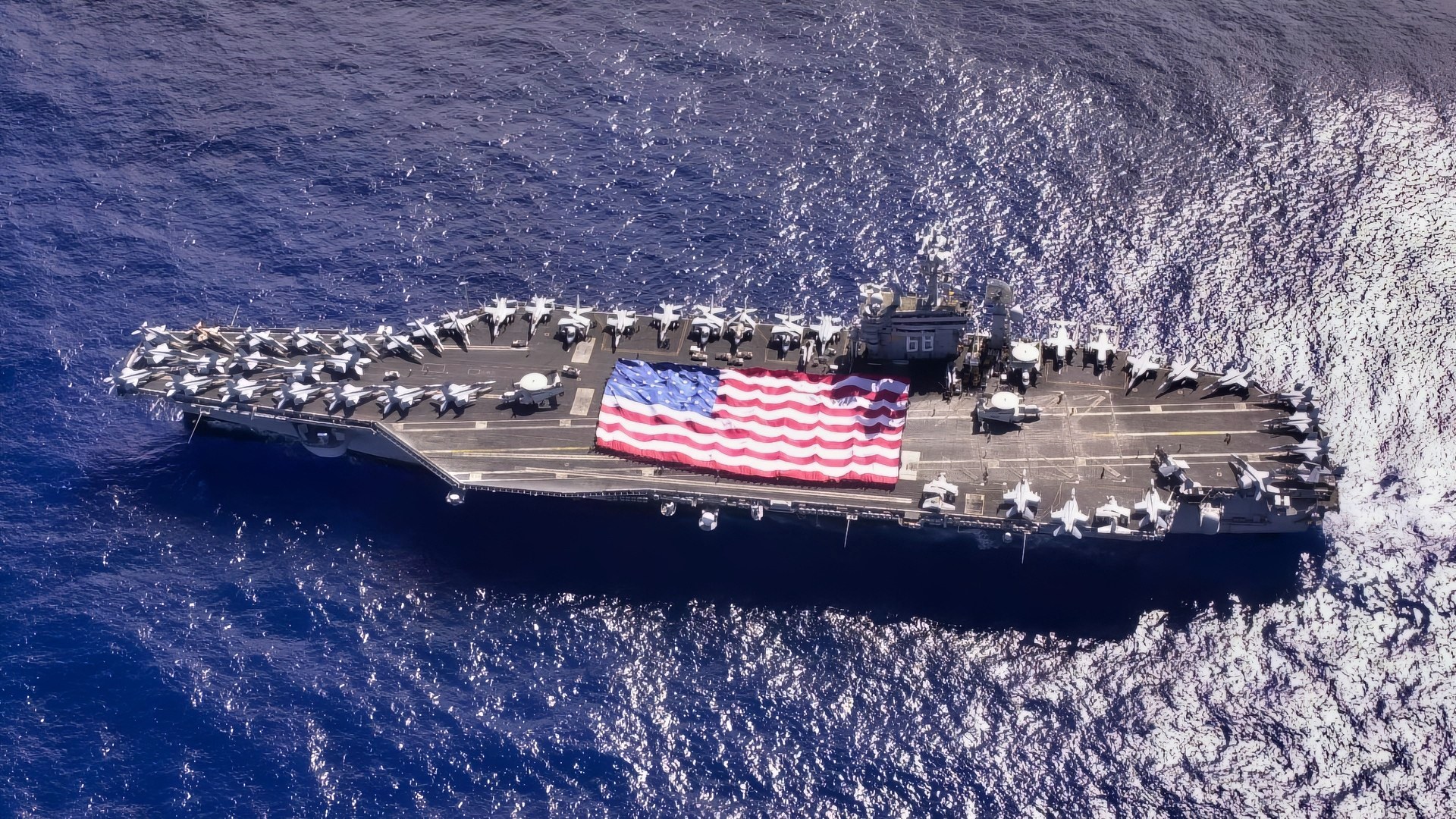
Pacific Ocean (Nov. 3, 2003) — USS Nimitz (CVN 68) crewmembers participate in a flag unfurling rehearsal with the help of family and friends on the ship’s flight deck during a Tiger Cruise. The Nimitz Carrier Strike Group and embarked Carrier Air Wing Eleven (CVW-11) are en route to San Diego, Calif., following an eight-month deployment to the Arabian Gulf in support of Operation Iraqi Freedom. U.S. Navy photo by Photographer’s Mate 3rd Class Elizabeth Thompson. (RELEASED)
China’s Submarine Fleet is Growing
Currently, the PLAN operates about 50 submarines, but the vast majority are diesel-electric boats, which limits their range and keeps them closer to the Chinese shore.
However, the PLAN is expected to have 65 submarines in the fleet by 2030. The US is rapidly expanding its anti-ship missile arsenal, including Tomahawk anti-ship Missiles and LRASMs.
Carriers and Airfields Are Prime Targets
The Chinese ballistic missiles will also be targeted against U.S. military runways and taxiways in Japan, Guam, and other Pacific islands in the event of a Taiwan invasion to impede American airpower.
In a new Stimson Center report, “Cratering Effects: Chinese Missile Threats to US Air Bases in the Indo-Pacific,” the Chinese will attack US airbases and crater the runways and taxiways, basically ceasing air operations for days if not weeks.
The essay’s main point is that to restore its ability to project air power early in a war, the United States will need to outthink—not outspend—the PLA. The sobering message is that American air bases “can no longer be considered a sanctuary.”
US Air Defenses And Countermeasures
The Chinese do have thousands of missiles that they can salvo against US aircraft carrier strike groups in the event of an invasion of Taiwan, which many analysts believe will happen by 2027.
The U.S. military continues to develop and field countermeasures to address the threat posed by these missiles.
The US will utilize a layered defense strategy. A carrier strike group isn’t a single ship. It brings multiple Aegis destroyers and cruisers, airborne early warning, electronic attack, decoys, and fighters, where they use a multi-layered defense system that includes:
For intercepting ballistic missiles in different phases of flight.
Electronic Warfare (EW): EA-18G Growler aircraft can blind or jam sensors and data links. Nulka active decoys and other shipborne deception tools can pull seekers off real targets in the terminal phase..
Close-in Weapons Systems are a last line of defense. The Phalanx CIWS is a rapid-fire, computer-controlled, radar-guided gun that can defeat anti-ship missiles and other close-in threats on land and at sea.
Newer technologies, such as the MQ-25 Stingray unmanned refueling drone, can extend the range of carrier-based aircraft, allowing the carrier strike group to operate further from China’s missile range.
The U.S. is exploring ways to counter the A2/AD strategy by using submarines, unmanned systems, and distributing forces across a broader area to complicate Chinese targeting.
“Rather than talking about the vulnerability of the aircraft carrier … we should think about it as perhaps the most survivable airfield in the region,” Chief of Naval Operations Adm. John Richardson said at a recent Brookings Institution event when National Defense asked him about the new Chinese weapons and how the Navy plans to counter them.
Tom Callender, a senior research fellow for naval warfare and advanced technologies at the Heritage Foundation and a former Navy officer said that despite the number of hypersonics that China has, it does not signal the end of the carrier.
“I don’t want people to throw in the towel … with China or Russia saying, ‘Oh, that’s it. Game over. We’re done,’” he added.
“It makes the problem a little harder, but it’s not insurmountable, and we’re already working ahead to adapt and overcome and regain advantages in there. It’s not going to be easy … but it’s not the doomsday that I think some people will have you believe.”
Are We Reacting Too Much To China’s Propaganda?
One thing to keep in mind is that all of these claims about China’s weapons capabilities come from China itself. As the piece from “War on the Rocks” that was cited earlier stated:
“China has the world’s largest bureaucracy to propagandize its greatest strengths while hiding (or at least dismissing) its greatest weaknesses. America, by contrast, ultimately bares all for all to see. It is an elementary analytical error to confuse the respective great powers’ “dirty laundry” with their “designer clothes.”

The Nimitz-class aircraft carrier USS Dwight D. Eisenhower conducts rudder turns during sea trials.
Obviously, this doesn’t negate any of the threat levels that the US would face if war did begin between the two superpowers. Complacency is death in wartime.
The US would face a daunting task in an Indo-Pacific war with China, and while the mobile missiles would themselves be challenging to track and destroy, the Chinese Navy, which is crucial for the invasion of Taiwan, would not.
And the US Navy and Air Force would target Chinese carriers, and landing ships needed for an invasion. That in itself would be a problematic scenario for the Chinese to overcome. And the entire purpose of China firing on our carriers is a Taiwan invasion.
And what’s lost in the threat is that China’s own ships are more vulnerable to missile attacks than US carrier strike groups are. They have to reach and support an invasion of Taiwan.
The threat to US carriers is real, but it isn’t necessarily a guaranteed death sentence. The Navy has been constantly upgrading the way it will fight in a shooting war with China.
The big question remains: would the carrier strike groups have enough non-kinetic means to defend themselves against a salvo of hypersonic weapons launched from China? Because eventually, the support vessels will run short or out of missiles for their defense.
About the Author: Steve Balestrieri
Steve Balestrieri is a National Security Columnist. He served as a US Army Special Forces NCO and Warrant Officer. In addition to writing on defense, he covers the NFL for PatsFans.com and is a member of the Pro Football Writers of America (PFWA). His work was regularly featured in many military publications.
More Military
Russia’s Mach 2 Su-30SM Fighter Has A Message for Any Air Force on Earth
The Mach 2.2 B-1A Bomber Has A Message for the U.S. Air Force
The Mach 2.35 ‘Super’ Eurofighter Typhoon Fighter Has a Message for Any Air Force On Earth
Canada’s CF-18 Hornet Fighter Crisis
Forget NGAD or the J-20: A 7th Generation Fighter Could Hit Mach 5


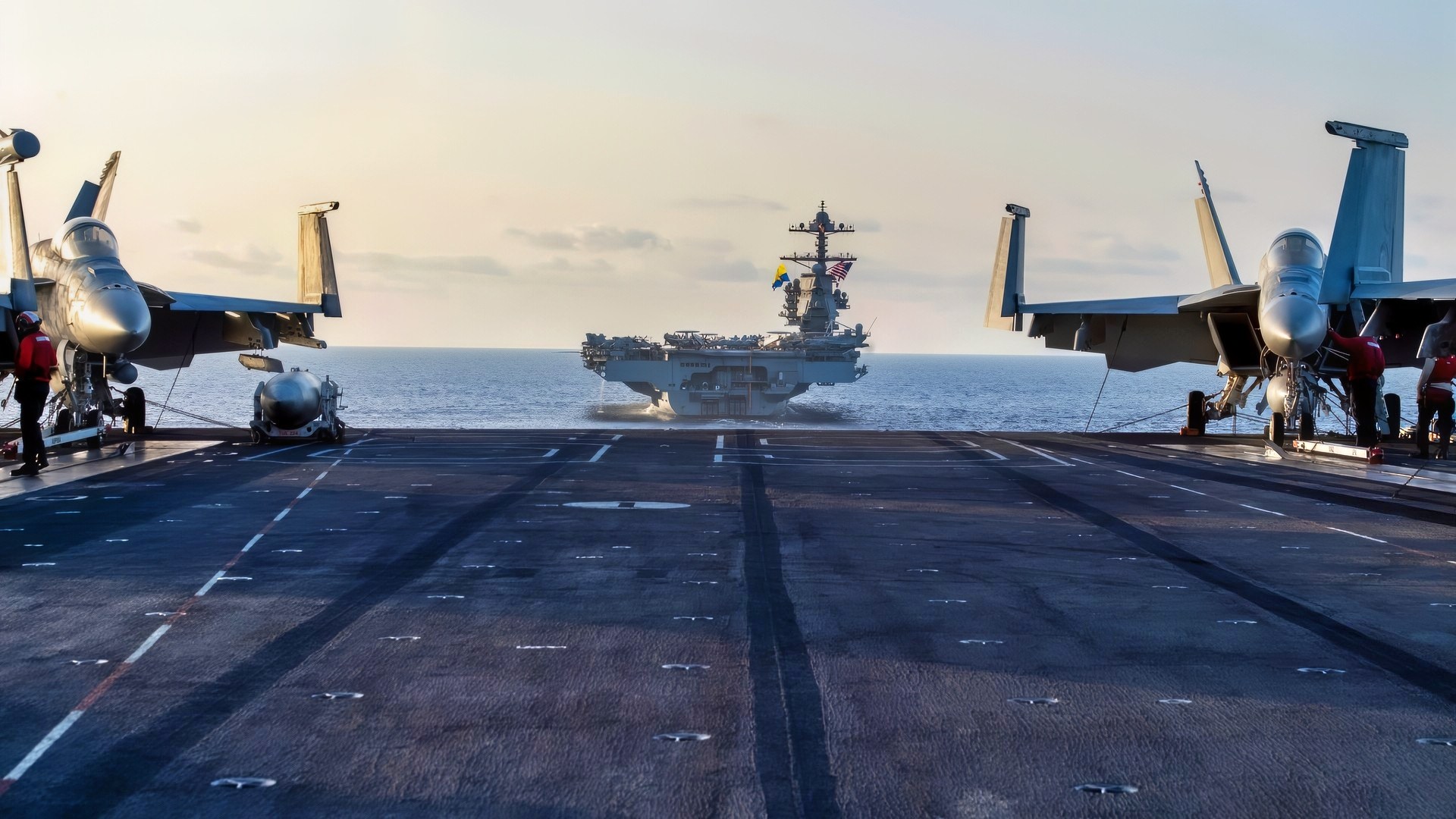








Jim
November 14, 2025 at 11:33 am
The article does a good job of laying out the challenges faced by U. S. aircraft carriers in a war against China.
True, a lot of Chinese claims about their own weaponry is open to question, but we have been watching, observing, and measuring to the best of our ability.
But, I would also suggest what this discussion leads to is a dawning realization we are dealing with a peer-competitor which could easily turn into a peer-adversary or enemy.
Easy assumptions the United States would dominate any war against China is fast slipping into the past.
And what we’ve already seen should give pause for thought about what such a war against China would entail.
Obviously, the United States Navy is taking all this in and as the article outlines is developing counter-measures.
But as the article rightfully suggests, it would be a bit of a crap shoot which would be hard to predict the outcome.
Military planners & strategists are given scenarios for certain war plans and they do the best they can with the given information and projected balance of forces.
Military men project confidence in public, that’s their job if asked to give public pronouncements. What they tell political leaders in private is their best, professional judgment of the possible course of military engagement.
The carrier is a big, tempting target and we can’t disperse or transfer what carriers do to smaller more dispersed surface vessels.
The article is a sober outline of the military weaponry both against U. S. carriers and what the U. S. can do in response.
In the end will political leaders get the right private, professional judgement of military leaders and will the political leaders make the right decisions based on the best military advice.
I hope so.